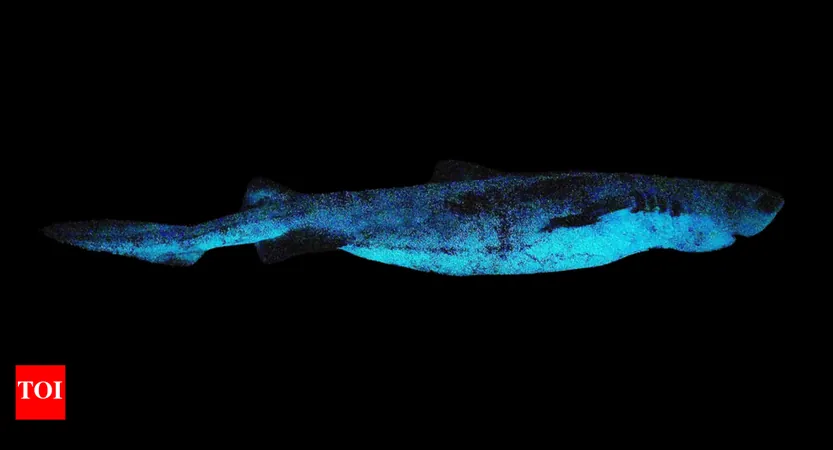
Unveiling Dermatology Secrets Through a Rheumatologist's Lens
2025-08-01
Author: Daniel
A Unique Perspective on Dermatology
At the 2025 Dermatology Education Foundation NP/PA CME Conference in Las Vegas, the insightful Dr. Karim Ladak, a seasoned rheumatologist and Clinical Assistant Professor at McMaster University, delivered a captivating session titled 'Rheum with a View.' He emphasized essential clinical pearls for dermatology professionals, showcasing the intersection of rheumatology and dermatology.
Mastering Cutaneous Lupus Erythematosus (CLE) Management
Dr. Ladak grounded his session in practical, real-world insights, particularly focusing on cutaneous lupus erythematosus (CLE), a skin condition intimately linked with systemic lupus erythematosus (SLE). He stressed the importance of non-pharmacological strategies in managing CLE, pointing out key lifestyle changes.
The Power of Protection and Prevention
"Photo protection is essential for these sensitive lesions," Ladak stated, underlining that smoking cessation can also significantly reduce disease activity. He noted that many patients with CLE are smokers, and quitting can lead to remarkable improvements in their condition.
Essential Vitamins: A Smart Supplementation Strategy
Vitamin D supplementation emerged as crucial for managing CLE. Ladak referenced a 2014 Spanish trial observing that increasing vitamin D levels helped regulate the immune system in patients with vitamin D deficiency and CLE.
Understanding Risk and Demographics
Dr. Ladak clarified that while CLE can exist independently or as part of broader systemic disease, only about 15% of patients with CLE will develop systemic lupus. He highlighted that the condition is particularly prevalent in women of childbearing age and tends to be more severe in women of color.
Diving into Subtypes of CLE
Ladak categorized CLE into three main subtypes: acute, subacute, and chronic. All share common features like photo-sensitivity and interface dermatitis, a distinctive inflammation pattern.
Acute and Its Hallmark Signs
The acute subtype includes the well-known butterfly rash, typically found on the cheeks and nose but sparing the nasolabial folds. These rashes generally heal without scarring but are strongly linked to systemic disease.
Subacute and Chronic Challenges
Subacute CLE manifests as annular or papulosquamous lesions resembling psoriasis or eczema, typically favoring sun-exposed areas but sparing the face. Interestingly, around 50% may progress to systemic lupus, often mild, while about a third may be drug-induced in older males.
Chronic CLE, the most severe form, often appears as discoid lesions that are scarring and can lead to permanent hair loss, primarily affecting the scalp, face, neck, and ears.
Effective Treatment Protocols
Ladak equated inflammation to a fire needing extinguishing. He advocated for topical and systemic corticosteroids as first-line treatments during acute flares, while also emphasizing the role of antimalarials like hydroxychloroquine for long-term maintenance.
Spotting Systemic Involvement Early
To catch early signs of systemic lupus, Dr. Ladak encouraged clinicians to inquire about joint pain, fatigue, and oral or nasal ulcers, reminding attendees of four key screening questions. This proactive approach can significantly enhance patient outcomes.
Takeaways for Practitioners
Dr. Ladak’s engaging session equipped attendees with memorable insights and practical frameworks for recognizing and managing CLE effectively across its spectrum, bridging the critical connection between dermatology and rheumatology.

 Brasil (PT)
Brasil (PT)
 Canada (EN)
Canada (EN)
 Chile (ES)
Chile (ES)
 Česko (CS)
Česko (CS)
 대한민국 (KO)
대한민국 (KO)
 España (ES)
España (ES)
 France (FR)
France (FR)
 Hong Kong (EN)
Hong Kong (EN)
 Italia (IT)
Italia (IT)
 日本 (JA)
日本 (JA)
 Magyarország (HU)
Magyarország (HU)
 Norge (NO)
Norge (NO)
 Polska (PL)
Polska (PL)
 Schweiz (DE)
Schweiz (DE)
 Singapore (EN)
Singapore (EN)
 Sverige (SV)
Sverige (SV)
 Suomi (FI)
Suomi (FI)
 Türkiye (TR)
Türkiye (TR)
 الإمارات العربية المتحدة (AR)
الإمارات العربية المتحدة (AR)